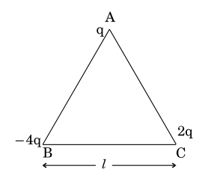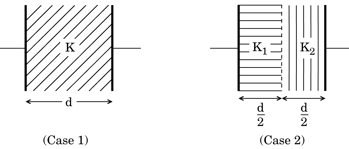Embibe Experts Solutions for Chapter: Electrostatic Potential and Capacitance, Exercise 1: cbse-2020
Embibe Experts Physics Solutions for Exercise - Embibe Experts Solutions for Chapter: Electrostatic Potential and Capacitance, Exercise 1: cbse-2020
Attempt the practice questions on Chapter 2: Electrostatic Potential and Capacitance, Exercise 1: cbse-2020 with hints and solutions to strengthen your understanding. EMBIBE CHAPTER WISE PREVIOUS YEAR PAPERS FOR PHYSICS solutions are prepared by Experienced Embibe Experts.
Questions from Embibe Experts Solutions for Chapter: Electrostatic Potential and Capacitance, Exercise 1: cbse-2020 with Hints & Solutions
Four-point charges and are placed at the corners of a square of sideas shown in the figure.

Find the potential energy of this system.
Three-point charges and are placed at the vertices of an equilateral triangle ABC of side as shown in the figure. Find out the amount of the work done to separate the charges at infinite distance.

Draw the equipotential surfaces corresponding to a uniform electric field in the direction.
Derive an expression for the electric potential at any point along the axial line of an electric dipole.
Describe briefly the process of transferring the charge between the two plates of a parallel plate capacitor when connected to a battery. Derive an expression for the energy stored in a capacitor.
A parallel plate capacitor is charged by a battery to a potential difference V. It is disconnected from battery and then connected to another uncharged capacitor of the same capacitance. Calculate the ratio of the energy stored in the combination to the initial energy on the single capacitor.
The space between the plates of a parallel plate capacitor is completely filled in two ways. In the first case, it is filled with a slab of dielectric constant . In the second case, it is filled with two slabs of equal thickness and dielectric constants and respectively as shown in the figure. The capacitance of the capacitor is same in the two cases. Obtain the relationship between , and .

Three point charges and are initially infinite distance apart. Calculate the work done in assembling these charges at the vertices of an equilateral triangle of side . Take
